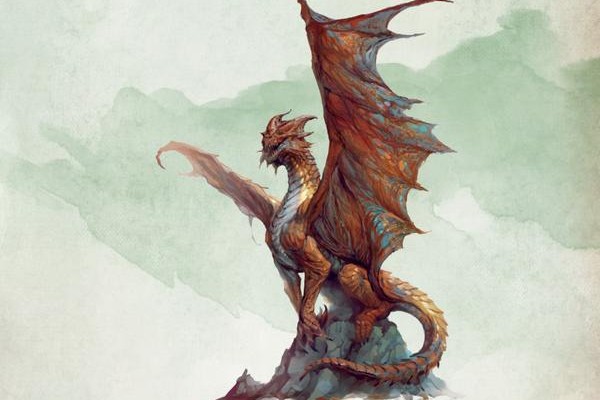D&D Next launched yesterday, so now it’s time to play some games, right? Not quite yet. In a brilliant marketing strategy from 1999, Wizards of the Coast has decided to release the books in monthly succession. So although we have the full range of heroes to play with, the resources for adversaries are limited.
What would Dungeons & Dragons be without dragons? Luckily you don’t have to dwell on that dreadful idea for longer than it took you to read it, because Wizards has leaked the stats for the iconic Red Dragon via their Twitter feed.
As seen in the screenshots below, the challenge rating for the Red Dragon ranges from four to twenty-four, depending on the age. In contrast to the Elder dragons of D&D 4e, the oldest dragon is now called Ancient. This is a subtle, but very effective change in terminology.
An ‘elder dragon’ sounds like a decrepit wyrm with denture fangs and bad eyesight, whereas the term ‘ancient dragon’ stimulates the imagination. It invokes ideas of a creature belonging to the very distant past and to a different world entirely. Ancient dragons are legendary predators that predate history with their mysterious primal powers, but the coolest idea is that they still might be around somewhere.
All previous Monster Manuals have had descriptions of creatures, but none have been so clearly designed for role-playing and world building as D&D Next. In the case of the Red Dragon, Wizards has listed four unique characteristics of the creature that any DM can grab in a pinch to add some tasty details to an encounter. DMs might also use these conceptual details to start an adventure off. Players benefit greatly from these four characteristics as well; they can be used as platforms to incorporate into their character’s history.
These design changes alone aren’t enough. After all, when a creature is half of the name of your game, it has to be a badass, right? To emphasize the chaotic nature of dragons, Wizards has included Lair Actions, and Regional Effects to boot.
Lair Actions are the embodiment of the chaotic nature of dragons. Not only are you trying to keep your party alive as you fight a fire-breathing damage sponge, but its lair is trying to kill you, too. This creates interesting, dynamic environments that are not out of control or unbalanced -like some DM-created experiments can turn out to be.
Regional Effects are similar, but are more grounded in the role-playing aspect. As the dragon lives in its lair it changes the surrounding area with its magic. When the Lord of Lockhaven hired your party to find the source of the mysterious tremors and poisoned water wells, who would have guessed it was a legendary Red Dragon that was morphing the nearby mountain into its volcanic vacation home?
Not all creatures will have this level of detail, as we can see in the two screenshots below of a Bulette and Umber Hulk. However, even mundane creatures such as these will have a pinch of role-playing flare.
There is no doubt that Wizards will continue to trickle out screenshots over the next month as we get closer to the Monster Manual’s release date of September 30th. When they do, you can be sure to find them here on NerdSourced.
Looking for more adventure-building resources to hold you over for the Monster Manual and Dungeon Master Guide? Check out this D&D 5e supplemental adventure.
Which iconic D&D creature are you looking forward to seeing in the next Monster Manual?






